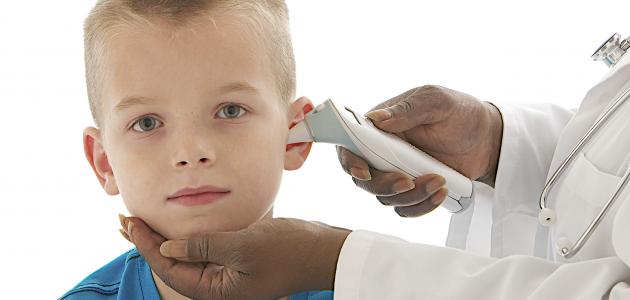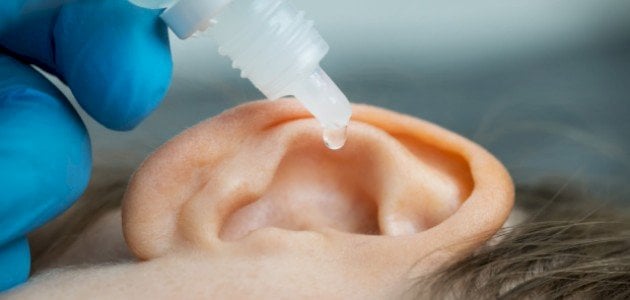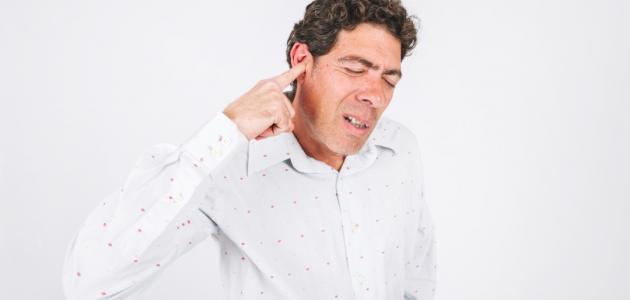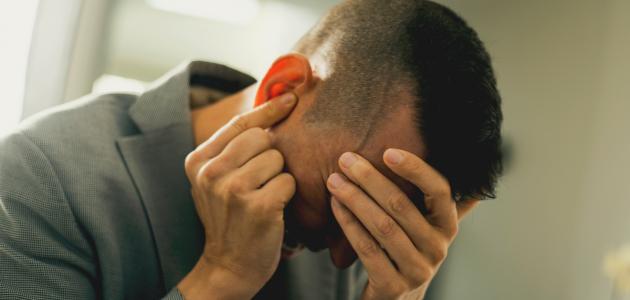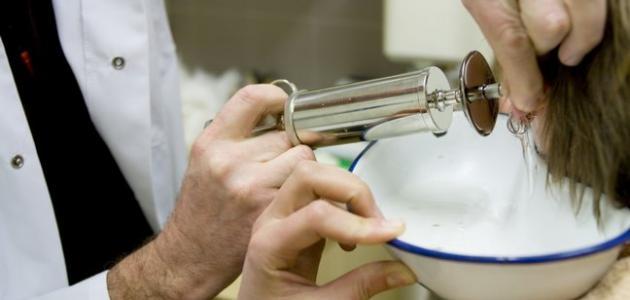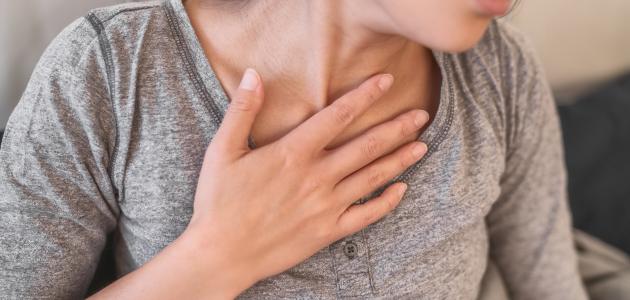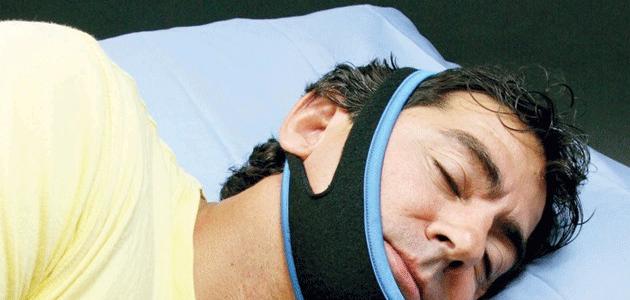General treatments and advice for ear blockage
Ear blockage is one of the annoying disorders that cause discomfort and may affect the sense of hearing in some cases. In some cases, simple blockage in the ear can be eliminated by popping the ear, moving the mouth muscles in different directions, and performing some other movements, but if these movements cause increased severity Symptoms: You should stop doing this and consult a doctor as soon as possible. Other home methods that may contribute to getting rid of ear blockages include the following:
Perform the Valsalva maneuver
The Valsalva maneuver is one of the breathing techniques that is performed to help equalize pressure in the middle ear area if it is applied correctly. The principle of this technique is based on pushing air from the throat into the Eustachian tube or Eustachian tube. ) to work to push out the body causing the blockage in the ear, such as wax, and thus relieve the pain and congestion in the blocked ear. It is noted that care must be taken to master this technique before performing it; If the air is pushed with great force, this may lead to a perforated eardrum, or raise the risk of ear infection due to pushing bacteria into the auditory canal. The following is an explanation of how to perform the maneuver:
- Draw a deep breath with the mouth closed and the nose closed by pressing the nostrils with the fingers of the hand.
- Pushing air from the lungs with resistance from the blocked nose and mouth, which will push the air through the Eustachian tube. The success of the operation can be confirmed when a slight popping sound is heard when the tube expands.
- Repeat the process several times to ensure that the cause of the blockage is removed. If no change occurs after performing the technique, the problem may not be related to the Eustachian tube.
Read also:Causes of shortness of breath and dizziness
Steam inhalation
Steam inhalation contributes to opening the blockage in the ear by dissolving the mucus and facilitating its exit and movement in the respiratory system and nose, thus facilitating the opening of the Eustachian tube. This method is characterized by not being accompanied by any health complications or side effects. You can also shower with warm water for 10 minutes and inhale the steam during the shower. Slowly to help get rid of the ear blockage. As for the method of steam inhalation, it is done as follows:
- Place your face close to a bowl of hot water to inhale its steam, taking care to avoid burns.
- Surround the head with a towel to confine the steam to the facial area.
- Breathe out the steam slowly.
Swallowing to help open the ear
In some cases, the blockage in the ear is caused by a sudden change in ear pressure, as is the case during a plane landing. In this case, it is possible to repeatedly swallow saliva, chew gum, or suck candy, as this method helps to produce saliva and repeat the swallowing process, thus stimulating the opening of the canal. Eustachian tubes and pressure equalization in the ear.
yawn
Yawning helps open the Eustachian tube, and if you are unable to yawn, you can imitate the yawning process by opening your mouth as wide as possible, which may have an effect similar to yawning in opening the tube. This method can be repeated every few minutes until you hear the sound of the ear opening.
Read also:Causes of loss of sense of smell
Medicines sold without a prescription
Some medications sold without a prescription may help treat ear blockage, including the following:
- Nasal decongestants: (English: Nasal decongestant) You can try to perform the Valsalva maneuver after using these medications, and it is also recommended to use them about an hour before boarding the plane, in order to prevent ear blockage in people who usually suffer from ear blockage during plane rides, and it is noted that it is necessary to follow the instructions for using the drug. Carefully.
- Nasal corticosteroid: Nasal corticosteroids contribute to reducing inflammation in the nasal tract, and thus contribute to opening ear blockages, by facilitating the passage of air through the Eustachian tube and equalizing ear pressure.
Reasons to see a doctor
If home methods do not succeed in getting rid of ear blockage or if the blockage is accompanied by some other symptoms, you should consult a doctor. These symptoms include the following:
- fever.
- pain in the ear.
- The blockage does not go away.
- hearing loss.
Treating ear blockage caused by wax accumulation
There are many methods that may contribute to getting rid of earwax. The doctor may use special tools known as a curette, or by suction, or by injecting warm water. In chronic cases in which the accumulation of wax in the ear recurs, the doctor may resort to drug treatments such as Carbamide peroxide medication (in English: Carbamide peroxide), with the need to note that you should adhere to the doctor’s instructions regarding the use of these medications and limit their use only when needed because they may have an effect on irritating the skin in the ear canal and eardrum. Here it is indicated that it is necessary to avoid following some methods. Unsafe household use, such as ear candling, as it may harm the ear by burning it, blocking the ear canal, or perforating the eardrum, in addition to the lack of stability in the effectiveness of this method. The principle of this method is based on bringing a burning candle close to the ear in an attempt to remove the earwax with heat or its adhesion. Using a candle to remove it, and based on what was mentioned, we always encourage consulting a doctor about appropriate home methods for removing earwax before performing it.
Read also:Best antibiotic for otitis media
Ear irrigation
Ear irrigation is one of the safe methods that can be followed in the absence of a hole or tube in the ear canal, and it is performed as follows:
- Softening earwax: Using drops of baby oil, a mineral oil, hydrogen peroxide, or glycerin.
- Irrigating or rinsing the ear: After applying one of the lubricating oils for a day or two, and making sure that the earwax is softened, warm water is used to facilitate the exit of the wax from the ear. In this method, a small amount of warm water is gently injected into the ear using a syringe that holds approximately 20 ml, and sterile water or water is used. Salt or boil water before using it if using tap water.
- Move the ear: It is recommended to move the ear in several directions, especially upward and backward, to ensure that the ear canal is straight and that water reaches it, and to encourage the wax to dislodge from it to facilitate its exit from the ear.
- Discharge of water from the ear: It is recommended to tilt the head to remove water from the ear, then dry the ear carefully with a towel or hair dryer.
- Repeat method: This method is repeated as needed until wax comes out of the ear.
Warnings of earwax removal
It is worth consulting a doctor if the symptoms do not improve, and if there is a fear that the wax will accumulate deeper inside the ear. It should also be noted that it is necessary to avoid trying to remove the wax using hard tools such as a hairpin or paper clip. It is also worth avoiding using the ear irrigation method for children, as well as it should be avoided. By people who are not proficient in it. It is also necessary to immediately stop continuing ear irrigation in the event of feeling pain, bleeding, or lack of improvement after repeating the procedure several times and consulting a doctor.
Treatment of clogged swimmer's ear
The treatment of swimmer's ear aims to get rid of the infection and accelerate the healing of the ear canal. Treatment begins with cleaning the outer part of the ear canal to ensure that the ear drops reach the inside, i.e. the areas affected by the infection. To achieve this, the doctor may resort to cleaning the ear with a scraper or suction. To get rid of excess wax, dead skin, and dirt, the following is a description of swimmer’s ear treatment in some detail:
Medicines to treat infections
Medications prescribed to get rid of swimmer's ear infections contain a group of different medicinal ingredients, and are sold in the form of drops. It usually contains two or more of these medicinal ingredients, noting that the doctor’s choice of the appropriate drop depends on the severity of the condition and the type of infection that the infected person suffers from. These medicinal elements or substances include the following:
- An acidic fluid to help restore the ear's natural acidic environment, which fights bacterial infections.
- Antibiotics to get rid of bacterial infections.
- A steroid medication to reduce inflammation.
- Antifungals to eliminate fungal infections.
As we mentioned, these medicines are sold in the form of ear drops, but in severe cases the doctor may prescribe an oral antibiotic. It is also worth consulting a doctor about the appropriate way to use ear drops, and the following tips can be followed:
- Warm the drop with your hand for several minutes to relieve the discomfort that the affected person feels when placing it on a cold eardrum. By warming it with your hands, its temperature becomes close to body temperature.
- Lie on the opposite side of the affected ear after using the drops to allow the medicine to reach deep areas in the ear and cover all areas of infection.
- Ask for help from others when needed.
- Pull the ear up and back after instillation.
- If the ear canal is completely blocked due to inflammation, swelling, or secretions, the doctor may resort to inserting a wick made of cotton or gauze to facilitate the delivery of the medicine into the ear canal.
Medicines to treat pain
Regarding pain relievers, the doctor may resort to prescribing some pain relievers that do not require a prescription, such as paracetamol, ibuprofen, and naproxen, or resort to stronger medications in severe cases.
Tips while treating swimmer's ear
Below is a statement of some tips that contribute to the success of treatment, preventing ear irritation, and maintaining ear dryness, especially during the treatment period:
- Avoid getting on a plane.
- Avoid swimming and diving during the treatment period.
- Avoid using earplugs, hearing aids, or headphones until the pain and discharge go away.
- Be careful to avoid water entering the ear canal during showering. In this case, you can use a piece of cotton and smear it with Vaseline to prevent water from entering when showering.
Treating ear blockage due to allergies
Blockage in the ear may occur as a result of exposure to allergies, which in turn causes itching and swelling in the outer ear, in addition to blockage of the middle ear with mucous fluid, which causes a problem in the drainage of ear fluids. The accumulation of fluid creates pressure in the ear, so the affected person feels pain in the ear and makes a popping sound from the ear. The ear, which may be accompanied by itching in the middle ear. These events may be accompanied by an accumulation of fluid in the inner ear. If the fluid becomes infected or infected, the affected person will suffer from tinnitus, dizziness, and loss of balance. Among the treatments used in this case are the following:
- Allergy medications that do not require a prescription, such as antihistamines and decongestants, to relieve some symptoms, such as relieving the feeling of pressure in the ear.
- Doctor-prescribed ear drops.
- pain killers.
- Warm compresses.
- Antibiotics if suffering from infection.
- See a doctor immediately if the pain increases or the feeling of pressure in the ear increases.
Treatment of ear blockage with foreign bodies
Care must be taken to remove foreign objects from the ear as soon as they enter the ear, as they may pose a risk of causing pain, bleeding, infection, damage to the eardrum, or loss of hearing in some cases. The risk of foreign objects entering the ear in children, such as pieces of candy, stones, and insects, is high. Among the tips that contribute to removing foreign bodies from the ear are the following:
- Try tilting the head to remove the foreign body.
- If you see a foreign body and are sure you can remove it, this can be done manually or using tweezers, taking care not to push it inside or remove it violently due to the sensitivity of the ear canal.
- If an insect enters the ear, it is recommended to kill the insect before removing it from the ear, and it is recommended to put drops of baby oil after warming it, or vegetable oil to facilitate the extraction of the insect, as the head is moved after adding the oil to facilitate the exit of the insect, and it is worth avoiding using this method in cases where there is The blockage is caused by an object other than an insect, and it should be avoided in the event of bleeding, pain, or a tube in the ear.
- Use warm water to push the object out of the ear if it is certain that there is no hole in the eardrum and provided that the injured person does not have a tube in the ear.
- See a doctor immediately if you are unable to remove the foreign body easily, or if part of it remains in the ear, or if you feel uncomfortable after removing the foreign body.
Treating ear blockage caused by fluid accumulation in it
The Eustachian tube drains fluids and mucus from the ear to the throat to be swallowed and eliminated. Blockage in the ear may occur as a result of fluid accumulation in the tube, causing fluid to accumulate in the middle ear. In this case, the doctor may only monitor the condition for a period ranging between 3-6 months without The need for medical intervention, especially if there are no disturbing symptoms or if the affected person is a child and there are no fears of delayed growth. Normal fluid pressure may return without the need to take any measures. If medical intervention is needed, the doctor places what is known as ventilation tubes ( In English: Ventilation tubes) or tympanostomy tube (in English: Tympanostomy tube) during a process known as myringotomy (in English: Myringotomy). This operation is performed under anesthesia, where a hole is made in the middle of the eardrum and the artificial tube is implanted in the auditory tube to keep it open and allow the fluids to drain. Then the tube falls out without medical intervention within about a year, and the eardrum perforation heals without the need for treatment within several days.
Treatment of ear blockage due to acoustic neuroma
Ear blockage may be caused by suffering from an acoustic neuroma in some cases, which is a benign tumor that grows in the ear and may cause pressure on the auditory canal and blockage. This tumor is usually removed surgically, and the blockage disappears after the cause is removed. .
